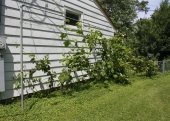




Highland Creamery, micro-dairy & family farm.
https://www.facebook.com/home.php#!/highlandcreamery









Highland Creamery, micro-dairy & family farm.
https://www.facebook.com/home.php#!/highlandcreamery









Highland Creamery, micro-dairy & family farm.
https://www.facebook.com/home.php#!/highlandcreamery








Brenda
Bloom where you are planted.
http://restfultrailsfoodforestgarden.blogspot.com/




Highland Creamery, micro-dairy & family farm.
https://www.facebook.com/home.php#!/highlandcreamery














Highland Creamery, micro-dairy & family farm.
https://www.facebook.com/home.php#!/highlandcreamery




Brenda
Bloom where you are planted.
http://restfultrailsfoodforestgarden.blogspot.com/




Highland Creamery, micro-dairy & family farm.
https://www.facebook.com/home.php#!/highlandcreamery




'Science is the father of knowledge, but opinion breeds ignorance.' - Hippocrates




Highland Creamery, micro-dairy & family farm.
https://www.facebook.com/home.php#!/highlandcreamery

|
Always respect your superiors. If you have any. - Mark Twain / tiny ad
The new purple deck of permaculture playing cards
https://www.kickstarter.com/projects/paulwheaton/garden-cards
|





